Idrw Team
SOURCE: IDRW.ORG TEAM

Air Commodore Kambiranda Muthanna Ponnappa (R), a distinguished figure who also helmed the National Flight Test Center, has put forth a compelling argument for continuous technological evolution in the Indian Air Force’s (IAF) upcoming Tejas Mk1A program. As discussions for follow-up orders of 100 Tejas Mk1A fighter jets are gaining momentum, Ponnappa emphasizes the imperative of integrating updated features into the aircraft as technology evolves, even during the production phase.
Ponnappa’s proposition is simple yet impactful: the Tejas Mk1A fleet should not be constrained by a uniform hardware and software standard throughout its lifecycle. In the fast-paced realm of technology, where advancements occur in shorter cycles, Ponnappa advocates for the incorporation of minor changes in software and hardware after every 40 aircraft are rolled out. This approach ensures that the Tejas Mk1A fleet remains at the cutting edge of technological innovation.
Continue readingSOURCE: IDRW.ORG TEAM
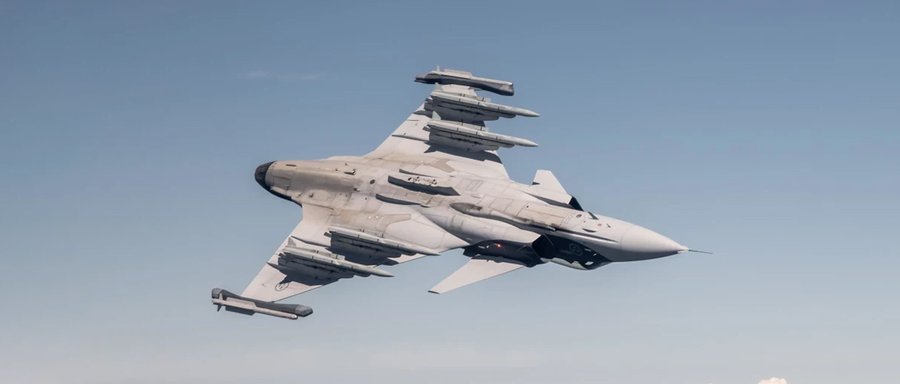
Saab, the Swedish aerospace and defense company, has thrown its hat into the ring by offering 114 state-of-the-art Gripen E fighters as part of its response to the upcoming Indian Air Force (IAF) Request for Proposal (RFP). The introduction of Gripen E could herald a new era of next-generation combat readiness, providing India with a cutting-edge air superiority advantage.
According to Mats Palmberg, Chairman and Managing Director of Saab India Technologies, the Gripen E offering encompasses both single-seater and two-seater variants of the fighter aircraft. Gripen E is no ordinary aircraft; it amalgamates a constellation of technological advancements that catapult it to the forefront of aerial warfare. This next-generation fighter aircraft delivers not only exceptional operational performance but also boasts an array of advanced features that are tailored to modern warfare’s multifaceted challenges.
Continue readingSOURCE: IDRW.ORG TEAM
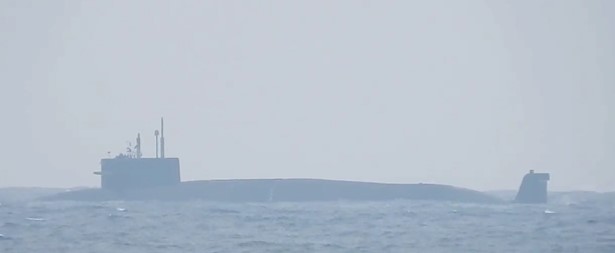
A recent video clip, seemingly depicting India’s first nuclear-powered ballistic missile submarine (SSBN) INS Arihant, has set social media abuzz with discussions and speculations. The undated footage, reportedly recorded off the coast of Vishakhapatnam, has triggered conversations about India’s maritime defense capabilities and its nuclear deterrence strategy. As the video circulates, observers are left wondering about the significance of this unexpected glimpse into one of India’s most secretive naval assets.
The INS Arihant holds a pivotal place in India’s naval arsenal. Its induction into the Indian Navy in 2016 marked a significant leap in the nation’s maritime capabilities. Notably, in November 2019, India announced the operationalization of its nuclear triad, a momentous achievement that further solidified the country’s position on the global stage. The triad, as outlined in India’s nuclear doctrine, involves the deployment of nuclear weapons on land, in the air, and at sea, ensuring a diversified and credible deterrence capability.
Continue readingSOURCE: IDRW.ORG TEAM

In a significant move that could revolutionize amphibious operations and enhance maritime capabilities, India and the United Kingdom are engaged in talks to co-develop the next generation of super-powered hovercrafts. These amphibious landing craft have the potential to serve as versatile transport vessels for troops and equipment during amphibious operations, facilitating swift movement from ship to shore.
India’s coastal defense has been augmented by the deployment of Griffon Hoverwork 8000TD hovercrafts by the Indian Coast Guard since 2001. However, these hovercrafts were primarily assembled from complete knocked-down kits (CKDs) supplied by the manufacturer, with no local manufacturing process in place. The discussions between India and the UK aim to change this narrative by co-developing a technologically advanced and locally manufactured hovercraft that meets the evolving operational requirements of both nations.
Continue readingSOURCE: IDRW.ORG TEAM

Indian state-owned Hindustan Aeronautics Limited (HAL) is poised to meet its commitments by delivering 11 LCA-Tejas fighter jets by the end of the current financial year, scheduled for March 2024. The development aligns with the nation’s efforts to bolster its indigenous defense capabilities and strengthen its air force fleet.
Among the aircraft to be delivered are eight LCA trainer aircraft, alongside three Tejas Mk1A fighter jets. This delivery schedule reaffirms HAL’s dedication to meeting project deadlines, a crucial aspect in modern defense procurement and manufacturing.
Continue readingSOURCE: IDRW.ORG TEAM
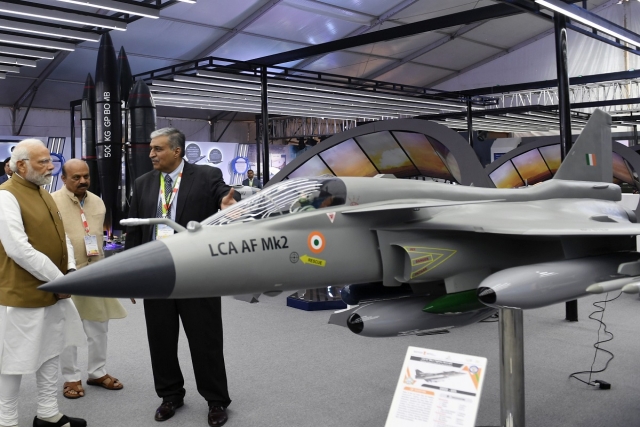
India’s indigenous defense capabilities are set to take another leap forward with the upcoming production of the Light Combat Aircraft Mk2 (LCA-Mk2), a state-of-the-art fighter aircraft that promises to elevate the nation’s aerial prowess. The collaborative efforts of the Indian Air Force (IAF) and Hindustan Aeronautics Limited (HAL) are driving this ambitious project, with a rescheduled timeline aimed at ensuring higher indigenous content in the aircraft.
The green light for the LCA-Mk2 project was given by the Cabinet Committee on Security (CCS) in September 2022, with an allocated budget of ?9,000 crore. This advanced fighter jet is expected to hit the skies for its maiden flight in approximately three years, heralding a new era in India’s defense capabilities.
Continue readingSOURCE: IDRW.ORG TEAM
As the Indian Air Force (IAF) forges ahead with its ambitious modernization plans, a significant development is on the horizon that could shape the nation’s aerial defense capabilities for decades to come. The IAF’s decision to retain and revamp its Sukhoi Su-30MKI fighter jets until 2050 is set to redefine India’s defense strategy and maintain its air superiority well into the future.
The Sukhoi Su-30MKI, a multirole fighter jet, has been a cornerstone of India’s air power since its introduction. With 222 of these advanced aircraft already inducted into the IAF and production by Hindustan Aeronautics Limited (HAL) concluding in 2021, the stage is now set for a comprehensive overhaul that would ensure the aircraft’s combat readiness for the next three decades.
Continue readingSOURCE: IDRW.ORG TEAM
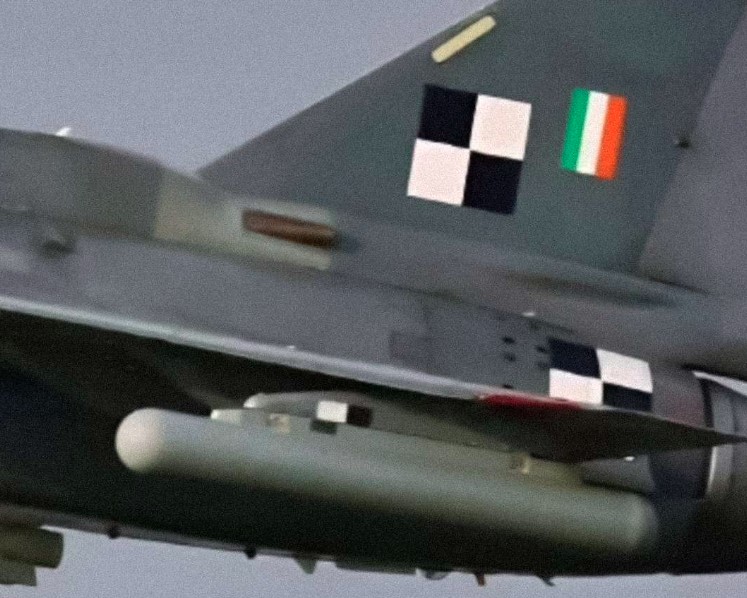
The Light Combat Aircraft Tejas, affectionately known as LCA-Tejas, has taken another stride forward in its journey towards advanced aerial capabilities. Recent sightings of the aircraft reveal it flying with an Advanced Self-Protection Jammer (ASPJ) Pod, signifying a significant enhancement in its defensive capabilities. This state-of-the-art jamming system is built on the foundation of Active Phased Array (APA) technology, bolstered by ultra-wideband Digital Radio Frequency Memory (DRFM).
The incorporation of the ASPJ Pod in the LCA-Tejas marks a pivotal development, as this cutting-edge system serves as a robust defense mechanism against a range of threats. Ground-based acquisition radars, fire control radars, anti-aircraft artillery, and airborne multimode radars pose formidable challenges during combat missions. The ASPJ Pod, with its sophisticated technology, ensures that the aircraft can counteract and thwart these threats effectively.
Continue readingSOURCE: IDRW.ORG TEAM

India’s pursuit of self-reliance in defense manufacturing has taken a significant leap forward with the Indian Air Force (IAF) considering the procurement of an additional 100 Tejas Mk1A fighter jets, supplementing the existing order of 83 aircraft. This decision not only bolsters the nation’s defense capabilities but also paves the way for a substantial increase in the indigenous content of these advanced aircraft.
Hindustan Aeronautics Limited (HAL), the state-owned aerospace and defense company, is set to play a pivotal role in boosting the indigenous content of the Tejas Mk1A fighter jets. Presently, the indigenous content stands at an impressive 65 percent. However, with the heightened emphasis on indigenous manufacturing, HAL is poised to elevate this percentage to well over 75 percent in the forthcoming years.
Continue readingSOURCE: IDRW.ORG TEAM

In a significant step toward enhancing maritime cooperation, Javier Paulinich, the Ambassador of Peru, paid a visit to the Indian state-owned shipyard, Mazagon Dock Shipbuilders Limited (MDL). The visit aimed to explore potential collaborations and leverage MDL’s export capabilities to bolster Peru’s naval ambitions.
During the visit, a comprehensive presentation highlighting MDL’s prowess in shipbuilding and export capabilities was showcased to Ambassador Paulinich. The presentation provided insights into MDL’s expertise in ship design, construction, and state-of-the-art facilities. This was followed by a productive discussion between the ambassador and MDL’s management team, where avenues for collaboration and partnership were explored.
Continue readingSOURCE: IDRW.ORG TEAM

Defense Research and Development Organization (DRDO) is poised to conduct crucial tests of the Astra MkII, the country’s second beyond visual range air-to-air missile. As the missile successfully completes carriage and release trials, its imminent full configuration test marks a significant milestone in India’s journey toward advanced air defense capabilities.
The Astra MkII project represents the DRDO’s relentless pursuit of cutting-edge technology to bolster the nation’s air defense systems. One of the key achievements in this project is the successful testing of the Dual-Pulse Rocket motor, a propulsion technology derived from the Indo-Israeli MR-SAM Air Defense program. This advancement equips the Astra MkII with enhanced speed, agility, and effectiveness.
Continue readingSOURCE: IDRW.ORG TEAM
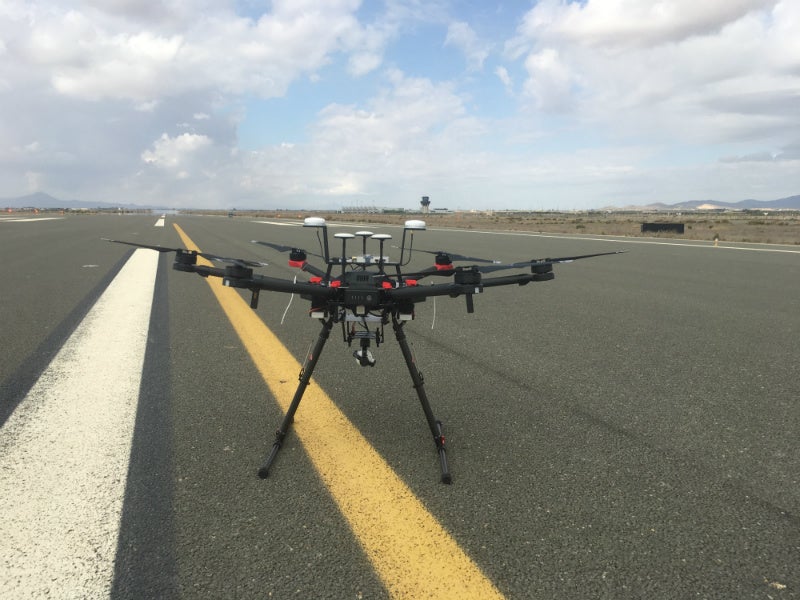
The Indian Air Force (IAF) is poised to embrace cutting-edge technology to enhance runway safety and operational efficiency. With a focus on mitigating the risks posed by Foreign Object Debris (FOD) on runways, the IAF is actively exploring the development and procurement of AI-powered drones that can not only scan runways for FODs but also safely remove them. This innovative approach aims to streamline runway inspection processes, reduce downtime, and safeguard aircraft during take-offs and landings.
FODs, which encompass foreign objects or debris that may be accidentally left on runways or taxiways, pose a significant hazard to aircraft. These objects, ranging from small metal fragments to larger items, can potentially cause serious damage to aircraft engines or other critical components during take-off or landing. Manual inspection and removal of FODs are time-consuming tasks that can disrupt operational schedules and compromise safety. In response, the IAF is exploring AI-driven solutions to revolutionize runway management.
Continue readingSOURCE: IDRW.ORG TEAM
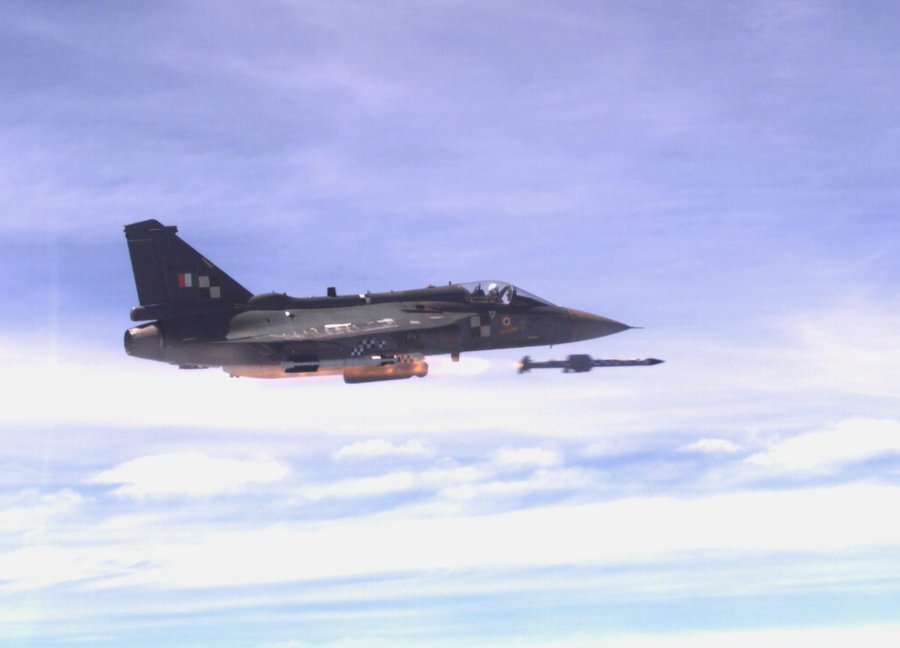
In a significant achievement for the Indian Air Force (IAF) and the country’s defence research capabilities, the first test firing of the indigenously developed Astra Mk1 Beyond Visual Range (BVR) air-to-air missile was successfully conducted from LCA-Tejas fighter jet. The test firing took place off the coast of Goa and marked a crucial step in enhancing the operational capabilities of Indian fighter jets.
The test firing was conducted in collaboration with Hindustan Aeronautics Limited (HAL), utilizing Tejas LCA LSP-7 as a flying testbed for the missile. This collaboration underscores the country’s commitment to self-reliance in defence technology and its dedication to enhancing the firepower and capabilities of its indigenous fighter jets.
Continue readingSOURCE: IDRW.ORG TEAM

In a significant stride towards bolstering its indigenous defense capabilities, India is set to introduce a unique Special Purpose Vehicle (SPV) model that involves private players in the development of two cutting-edge fighter jet programs. The Advanced Medium Combat Aircraft (AMCA), a fifth-generation fighter jet program, and the Twin Engine Deck-Based Fighter (TEDBF), a 4.5th generation fighter program for the Indian Navy, will see private players take the lead under this innovative approach.
The SPV model, specifically designed to enhance collaboration between the government and private sector, aims to leverage the strengths of both parties while streamlining the procurement process. Unlike conventional routes where government entities lead the projects, this approach envisions private players taking a majority stake in the SPV. This not only fosters greater ownership and accountability among private players but also expedites decision-making and reduces procedural delays.
Continue readingSOURCE: IDRW.ORG TEAM
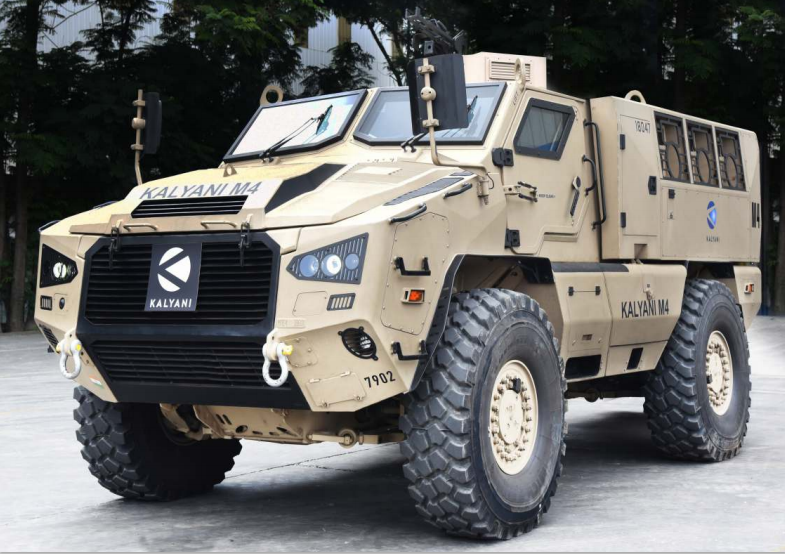
In a significant development for India’s defense industry, Kalyani Strategic Systems Limited (KSSL), a subsidiary of Bharat Forge, has secured two lucrative export orders amounting to €93.87 million (~?850 crores) from friendly countries. The orders encompass the supply of essential components and armoured vehicle chassis, highlighting India’s prowess in the defense manufacturing sector.
KSSL, established as a dedicated entity under Bharat Forge Limited to spearhead defense-related initiatives, has gained recognition for its advanced capabilities and cutting-edge technologies. The two export orders come as a testament to KSSL’s growing prominence in the international defense market.
Continue reading